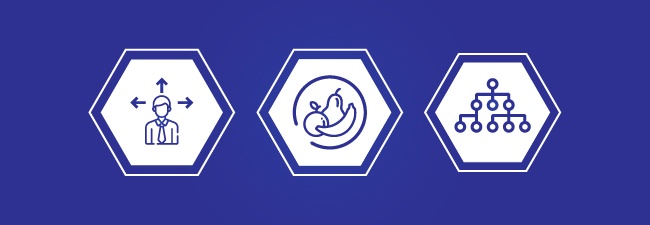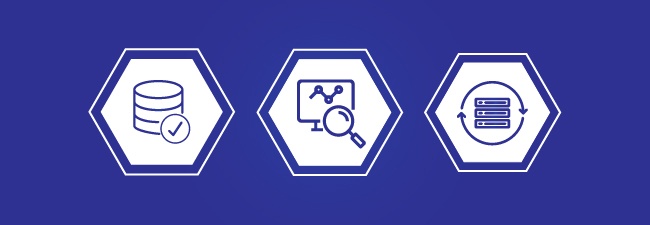There are generally two distinct approaches you can take when managing the product lifecycle. One: you can complete this exercise manually, spot-checking your retail data yourself and deciding when to remove a product from your store. Two: you can turn to specialized software to assist you. It shouldn’t be too difficult to determine which path you should take.
Considering the pace of the retail industry, and the pressure under which you operate, you can't afford to manage this process manually. As mentioned in a previous piece, managing the lifecycle of products should not even be attempted without some form of automation. It’s not a nice-to-have or a luxury; it’s a critical element that is vital to your success.
After all, ask yourself this: would you want to hand over any advantage to your competition? By not automating this process - essentially not using specialized software such as DotActiv - you’d find yourself doing just that.
For the sake of context, when we talk about managing the product lifecycle, we’re referring to the journey a product takes from the time you list it for sale in your store to when you decide to delist it and stop selling it.

What must be in place before beginning product lifecycle management?
There is no doubt that with specialized software, you can manage the lifecycle of your products effectively. That said, we would not recommend you begin this process before you first take a few steps.
By the way, besides the first step listed below, there is no particular order to follow. It is rather a collection of actions to take before beginning to manage the lifecycle of any product using DotActiv’s software.
1. Complete integration
The first step you’d want to take in preparation is to complete an integration. As it stands, ‘integration’ can come across as a complex process that includes a variety of moving parts to work effectively.
In truth, data integration is just the process whereby you pull your retail data from various sources - POS database, ERP, or SAP - and place it in a staging table. Once the data is in the staging table, DotActiv’s software can process it.
If you’re still unsure about doing an integration, it’s worth considering the many practical and financial benefits.
From a practical side, it reduces the complexity of processing your data. It also increases the value of your data as you can combine different datasets. From a financial point of view, integration allows you to reduce your labor costs and, since it’s an automated process, you can reduce the costs associated with human error.
The fact that we’re mentioning the need for integration means that product lifecycle management needs a database for it to function. Thus, it would only apply to DotActiv Pro and DotActiv Enterprise and not DotActiv Lite or Free.
2. Set up your clusters
Once you have done integration and all your retail data has pulled through, it’s time for you to set up your clusters.
How you approach this step is entirely up to you and your business objectives. You could cluster based on categories, or it could be store-specific. If you’re currently debating which approach to take, this infographic will help you make up your mind.
Regardless of the approach you take, what is crucial is that you need to understand how you have set your clusters up and you have them ready to go in DotActiv’s cluster maintenance.
That’s because you can’t manage your product lifecycle without knowing first how it will affect your different stores and categories. Also, your clustering influences all other decisions going forward, including those around your assortment planning and planograms.
3. Classify your products
As mentioned in another article, product classification is a vital part of your success since it is an exercise designed to help you understand how your customers shop your categories and store. But there are also other practical implications of listing a new product. And accurately so.
For example, an accurate classification - which includes filling in all the relevant SKU information - makes it easier for your shelf planners to create accurate planograms. It also allows them to create category-based clusters, select and optimize ranges, and refine shelf replenishment through averaged days of supply.
If you intend to use DotActiv software, cleaning and classifying your data is a must. In the market dimension, you would need to ensure your Store Name, Store Code, Store Format, and Region fields are all filled in accurately.
For the product dimension, it would need to include item details such as Barcode, Brand, Product Description, Size, and Unit of Measure (UOM).
4. Integrate your store and DC stock
A final recommendation before you begin with product lifecycle management is to integrate your Store and Distribution Centre (DC) Stock data.
The reason why it’s a recommendation rather than a must-do is that it’s not necessary. While part of DotActiv’s standard integration includes asking for Markets, Products, Sales Store, and DC Stock, you can still get the process going without it. However, more information is always better.
There is also the point that knowing your stock levels will help you when you want to discontinue an item, allowing a smoother exit of products out of your business.

How does DotActiv suggest you approach managing the product lifecycle?
When it comes to managing the product lifecycle, DotActiv has a standard approach that it suggests you use to help you manage the product lifecycle effectively.
1. Clean up your data
It begins with product classification. Let's say that you want to list a new product - Item A - and so it enters the DotActiv database as a new SKU with its base set of information.
At this stage, you would have already handed over your product hierarchy (during integration) to us, but we don’t put it into a display structure. Instead, the first action we’d take is to classify the product. That includes cleaning up the Brand, the Product Description, and any other information. It could even mean taking out punctuation marks.
We would then place it into a second hierarchy.
There are two separate hierarchies that DotActiv keeps - the first is the display structure, which is how you would merchandise your products in-store. Everything around DotActiv works off this display from your category-based clustering to your planograms.
The second is the retailer or buyer’s hierarchy. This hierarchy is how the buyer understands the product. Your information will go into this second hierarchy while it's cleaned up and then placed in the first hierarchy.
So, the product comes in, it’s classified, and you now have a new SKU with all the necessary information.
2. Decide on your ranging approach
Once classified, you have two options. You can either do a range review or a range maintenance exercise, both of which form part of the assortment planning stage of category management.
A range review allows you to analyze the data around each product to establish whether one is performing or not. It’s quite an extensive exercise and takes time to complete. But it’s certainly worth it and can help you decide whether or not to derange or discontinue a product.
Depending on what you know about your products - you may already understand its financial impact. That said, it’s also always worth completing a category review since it can help you improve the overall efficiency and performance of the category.
Meanwhile, a range maintenance exercise includes tweaking your range until it’s optimized fully and performing as well as you could hope. Of course, maintaining your range is an ongoing exercise. You can’t simply do it once and then leave it.
3. Updating and implementing planograms
After you have ranged your product, it’s time to update your planogram. Considering that your product ranges regularly change as does your retail data, you shouldn’t take planogram maintenance lightly. What’s more, any changes you make will affect your space, and you have to adjust accordingly.
It’s also at this stage where you’d want to flush your data through your planograms. Then after this, you would be able to complete your planogram and sign it off for implementation.
At the same time, the planogram with the updated SKUs is processed through to your StoreCom, while the causal data (facings, capacity, etc) is also written back to your DotActiv database. StoreCom integrates with DotActiv Enterprise to automatically fetch and send new planograms to your stores for implementation. Your store managers can then implement the planogram and then upload their confirmation.
If you’ve linked your information to your replenishment engine - a recommendation - it’ll help you to forecast how much stock you need to meet customer demand. The beauty of the replenishment engine is that it doesn’t allow you to under-order.
4. Exit your products gracefully
When a product no longer works for your store, you face this question: how do you exit the product gracefully?
There are two different types of exits available to you. The first is deranging where you’re exiting it out of a group of stores. If that’s the case - you’re pulling inventory from a handful of stores and only stocking it at select stores - you can leave it to the store manager to sort it out. They’ll mark the product down, put it on a gondola end, and let the stock go.
It’s the second type of exit - discontinuing a product nationally where you need to be careful. That’s because it's not just the store stock that you need to consider. You also need to consider your DC stock.
In this case, what happens is DotActiv marks the product as discontinued. However, it’s not yet off the planogram. Instead, the system will look at how much stock you have across all your stores and DCs. The software will ensure that it depletes the stock in your DCs first. Then, once inventory hits a certain level across stores - it’s usually less than five weeks cover across 75% of your stores - the system marks it off the planogram.
At that point, there is enough time for your stores to deal with the last pieces of stock.
Conclusion
There is no doubt about this fact: you shouldn’t attempt to manage the lifecycle of any of your products manually. Interested in software that can help you to manage your products effectively? You can visit our online store here to find out more or book a complimentary consultation with a DotActiv expert.


